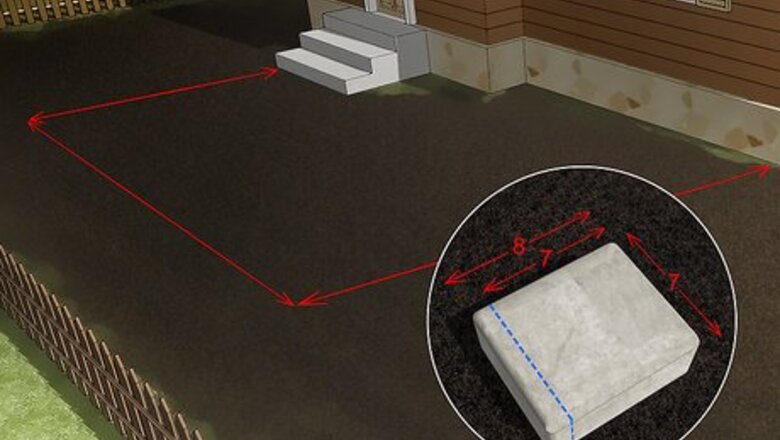
views
Using a Cold Chisel

Compare the installation space measurements to your paver. Use a measuring tape to determine the measurements of the installation space. Be sure to get a measurement for all 4 sides of the space. Afterward, compare the measurements to your paver and determine what needs to be cut from your paver to make it fit. For example, your installation location might be a 7 by 7 inch (18 by 18 cm) square and your paver 7 by 8 inches (18 by 20 cm). In this case, you need to cut a 1 by 7 inch (2.5 by 17.8 cm) piece from the longer side of your paver.
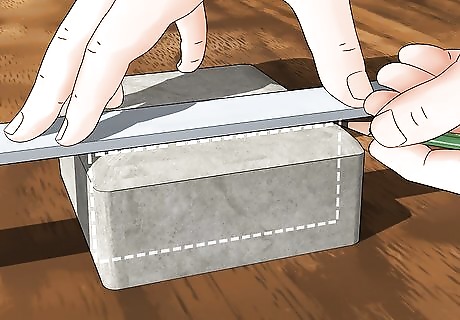
Use a straightedge to mark cutlines onto all 4 sides of your paver. Use your installation measurements to determine how much to cut off your paver. Place a ruler onto your paver and draw a line across the top to mark the region to be removed. Afterward, continue the line along the 2 sides and bottom of the paver. Double check that each pair of side lines and top and bottom lines are parallel to each other—you need to score along the entirety of this line. If you need to cut multiple points of the paver, create additional cutlines. For example, if you need to remove 2 corners of the paver, draw cut lines around each of its corners.

Score along the cutlines using a 1 inch (2.5 cm) wide cold chisel. Place the paver onto a flat surface. Align the sharp edge over your chisel over the cutline. Begin gently tapping the handle with a hammer to create a groove in the paver. Continue tapping the chisel along the cutline. Repeat this process until there is a ⁄16 inch (0.16 cm) groove along the entire cutline of the paver. Avoid hitting the chisel too hard—you might break off too much of the paver. If you can't find a flat surface, place your paver onto a piece of plywood held up by 2 sawhorses.

Hammer along the cutline groove to separate the paver into 2 pieces. Place the paver flat onto the ground. Align a brick-set chisel vertically in the middle of the groove. Firmly strike the handle of the chisel with a hammer to split the paver into 2 separate pieces. If you're having trouble, score around the cutline with your cold chisel again.

Remove protruding or uneven bits from the broken paver. Chip away at any problematic areas using your brick-set and hammer. Chiseling your paver can take a bit of practice to make a clean cut. For the first few times, you will likely have to take some time to even it out after the initial cut. Place your paver on a sandbag if it gets unsteady. Use a stone carving file to smooth out problematic spots. Push the file away from you and then lift it up instead of grinding it back and forth..
Using a Circular Power Saw
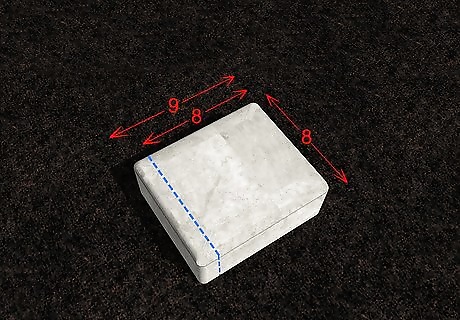
Compare the installation location measurements to your paver. Use a measuring tape to measure the space you plan to install your paver in. Make sure to record a measurement for each side of the space. Afterward, compare these measurements to your paver and determine how much needs to be removed to make it fit. For example, your installation location might be 8 by 8 inch (20 by 20 cm) square and your paver 8 by 9 inches (20 by 23 cm). In this case, you need to cut a 1 by 9 inch (2.5 by 22.9 cm) piece from the longest side of your paver.
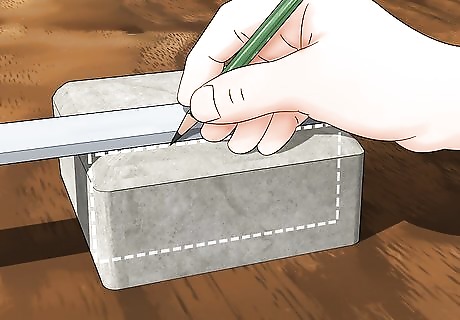
Mark a cutline onto the top and bottom of your paver using a straight edge. Using your installation measurements, determine how much to remove from your paver. Place a ruler onto your paver and draw a line on the top to mark off the region that needs to be cut. Afterward, turn the paver over and draw a line on the bottom parallel to the first one. Don't draw side lines on your paver—you don't need to cut along them.
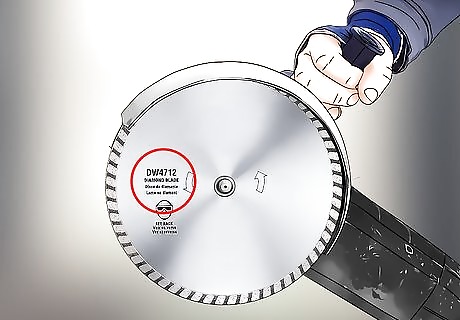
Attach a diamond masonry blade to your power saw. Attach vice grips to the side of the old blade. Loosen the bolt with a wrench and remove it. Afterward, take off the flange (the small rim under the bolt) and lift out the blade. Place your new blade on, reattached the flange, and tighten the bolt over it. Make sure that the teeth of the diamond blade are pointing in the opposite direction of the paver. Select a blade designed for cutting stone if you are working with stone pavers or it won't cut through them properly. Be sure to use a diamond blade specifically designed for cutting masonry and stone. This will help to prevent the blade from becoming blunt too quickly.
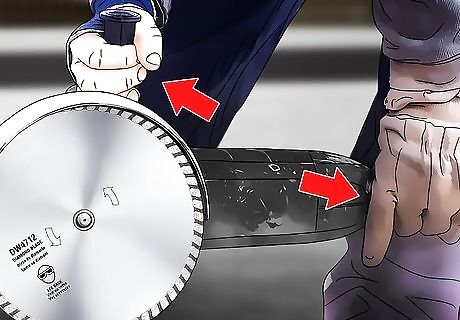
Place your left hand on the handle and your right on the blade shield. Before you begin cutting, get comfortable with the positioning of your hands. Grip the handle with your left hand and practice moving the blade forward and backward. Use your right hand to keep the saw steady. Press the blade against your brick and make sure it doesn't move around. Put a rubber mat or small carpet under the paver to prevent it from moving.

Saw along the marked line ⁄2 inch (1.3 cm) deep. Place the paver on a flat surface. Set the saw blade the cut to ⁄2 inch (1.3 cm) deep. Begin sawing along the penciled line. Press down on the saw with your right hand and apply gentle pressure to the paver. Afterward, you should have deep score lines on the back and front of the paver. Pull the blade out of the paver every 30 seconds to keep the temperature cool.
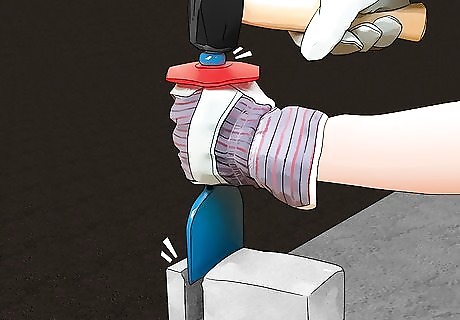
Place the paver onto a step with the unwanted end hanging off. Hold the paver firmly in place with one hand. Grab a hammer or mallet with your other hand and tap the unwanted end of the paver hanging off the step. The paver should break cleanly into 2 pieces along its deep score lines. If you don't have a step nearby, firmly hit the tip of the paver onto a flat, concrete surface. However, this method is more likely to create a jagged edge. Even out jagged edges with a hammer and 1 inch (2.5 cm) wide cold chisel. You can also use a stone carving file by pushing it away from you and lifting it up.
















Comments
0 comment